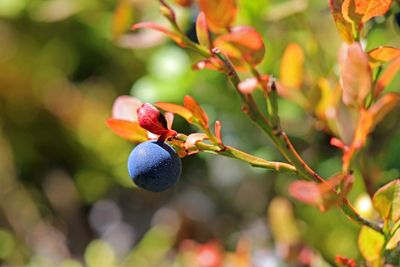Bilberry Plant Information
Bilberry (Vaccinium myrtillus) is also called whortleberry, European blueberry, and huckleberry. It’s a small shrub. Bilberry grows wild in the arctic and subarctic regions of the Northern Hemisphere. The bilberry shrub produces round, blue berries also known as bilberries. If you are wondering about the difference between blueberry and bilberry, you aren’t alone. Bilberry plant information tells us that both are berry shrubs in the Vaccinium genus. The fruit of the two species look alike and both taste good. However, the blueberries you purchase are usually from cultivated shrubs while bilberry usually grows wild.
Bilberry Cultivation
Although bilberries are wild shrubs, they can be cultivated. Bilberry cultivation works best in cool climates in USDA plant hardiness zones 3 through 8. If you are going to try bilberry growing in warm climates, protect the shrubs from too much heat. You’ll do your best to buy container-raised bilberry seedlings. Generally, once these shrubs get their roots in the ground, they prefer not to be disturbed. Like blueberries, bilberries thrive in acidic soil. Pick a location with full sun in cooler areas, but opt for partial shade in warmer climes. Bilberries are very tolerant of wind, so shelter is not needed. When you read the information on bilberry care, you’ll learn that it is an easy shrub to cultivate. The plants require no fertilizer and little irrigation. Plant them in spring and pick the berries in fall.
Bilberry Benefits
With bilberry cultivation so easy and bilberry benefits so great, there’s no reason not to include these shrubs in your garden. Bilberries have been used for many years as an herbal medicine in Europe. The berries and foliage are used to treat assorted ailments from diarrhea to kidney stones to typhoid fever. The anthocyanosides in bilberries are potent antioxidants. These build strong blood vessels and capillary walls. They also benefit red blood cells, stabilize tendons, ligaments, and cartilage, and lower cholesterol. Bilberries have been used to increase night vision since they increase retinal pigments.
